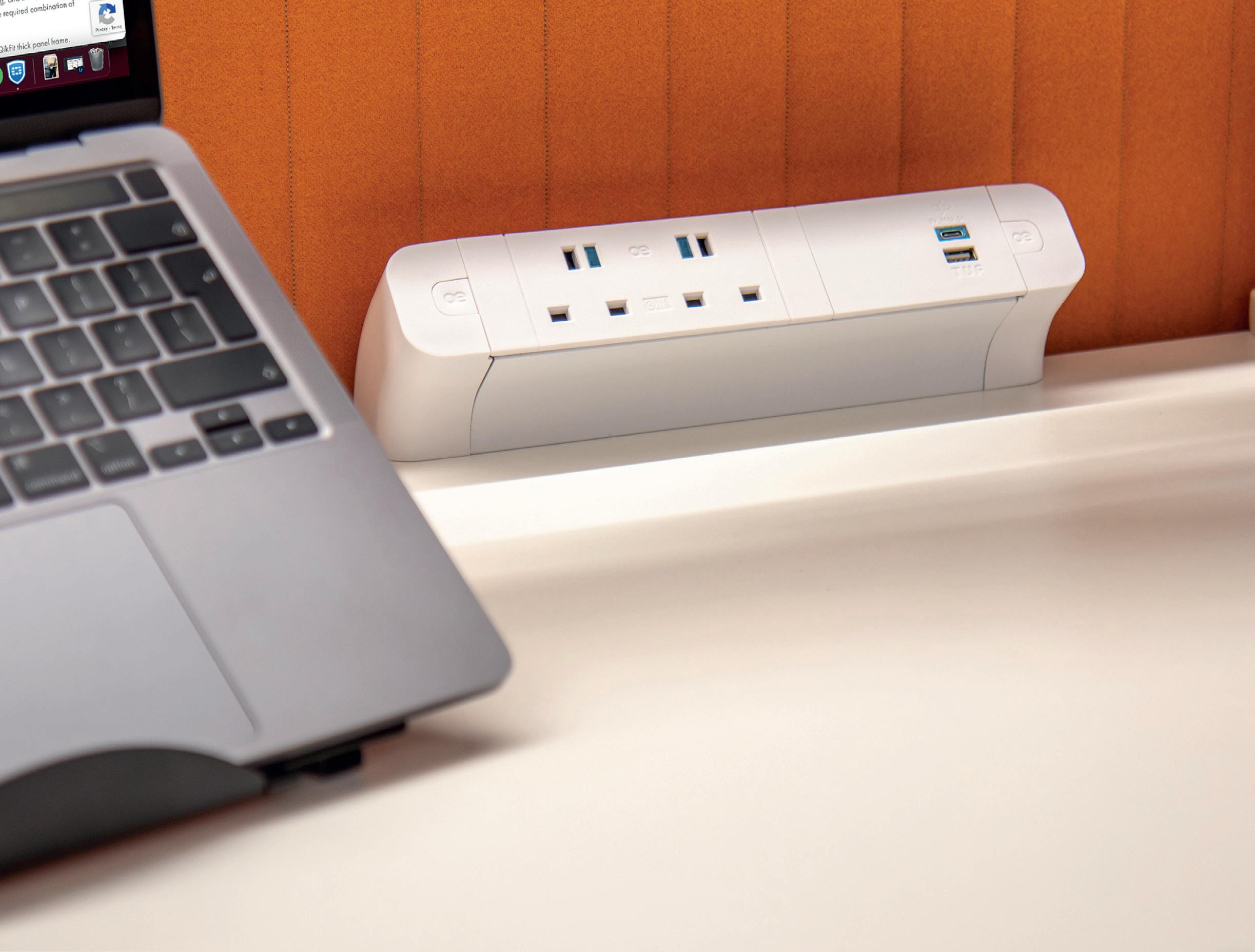
4 minute read
NEIL USHER
Paradoxically Speaking: Choice
We’re thrilled to bring you a new regular column from one of the country’s foremost workplace and change thinkers, leading author and QPR fan, Neil Usher. Whilst Neil can’t explain his team’s league position, he can provide an expert view of the issues facing workplace owners, operators, designers and users alike.
Neil Usher is Chief Workplace & Change Strategist at GosSpace AI, and Author of The Elemental Workplace and Elemental Change
Aparadox is a logically self-contradictory statement. The workplace sector is riddled with them and we’re going to explore a few over the coming months. By way of momentum-generating example, lurking in the fold between tweets for the best part of 2020 has been ‘the beginning of the end (of the workplace as we know it)’, AKA ‘the end of the beginning (of the workplace as we know it)’. The reality, of course, is that every day is both. While we’ve been at the kitchen table – or ironing board for height adjustability, as a colleague discovered – every day is neither, too. But that’s not the paradox we’re going to explore.
While we’ve been shuffling the wooden blocks around on the table top map with croupier sticks for the best part of a year, without any need to make an actual resourcecommitting decision, the matter of choice hasn’t been far away from every ‘still-outhere’, flag-waving LinkedIn post. Yet the emerging paradox is one of having complete freedom of choice but no available desirable option: I’m going to work at the office today, which is full.
Within the workplace sector we’ve been craving increased choice for decades. The underlying principle of almost every workplace transformation to an agile environment is a pool of shared amenities for us to choose as befits the task or mood. It’s one of my 12 elements in The Elemental Workplace. The pandemic has triggered the largest ever collection of data on individual occupant preferences for attendance and discovered (or, rather, validated) that we don’t want to commute every day, we want to be free to choose where to work each day. That probably means 2-3 days in the office each week, the remainder at the chosen domestic surface.
Yet, at the same time, organisations have finally realised now that their offices are completely empty and that they were actually always around half empty. The trend that has been supposedly accelerated by COVID-19 had been there all along and settled out. They’ve divided their total costs (‘the second biggest cost to the organisation’) by the magic of two and worked out that’s half of a whole lot of cash, only a fraction of which would kit every employee with a decent enough desk, ergonomic chair, monitor and peripherals for comfortable and effective home working and swerve a tsunami of claims for the relieving services of a chiropractor. The reality of the asset that they never considered needing to demonstrate a return on investment actually only being used for 15% of its available time, in a good week, has at last revealed that it was hiding in plain sight – even though, in this time, there have been hundreds of thousands of almost identical occupational density graphs slid across an equal quantum of buffed walnut in the direction of otherwisedistracted CFOs.
They’ve also simultaneously realised that their sustainability goals, proudly incomprehensible to most, were massively compromised. That the environmental construction certificate in the dusty-topped frame in reception isn’t worth much if the building is doubling up on its emissions per occupant. And that no amount of roof terrace apiary will atone for it.
All of which means that, at the exact same moment that we’re able to envisage a less structured, stressful and costly working life, breezing into the office as it takes our fancy, organisations are about to shed workspace like inhibitions before dinner at the Mixology awards.
With less space comes less certainty. Instead of planning and constructing an office for everyone on the off-chance that they all show up on the same day – which they never do – there’s far less available. Not by a whisker either – quite possibly a whopping third to a half less. Musical chairs suddenly got serious. And while we’re musing on whether, when we exercise our free-will, we’ll get a seat of whatever shape and size at all, we don’t know what our colleagues will be doing without sending several hundred IMs because that’s actually the reason we’re electing to go in that day. To see people. Not to sit at a desk with headphones on adding to the mounting stats about noise and disturbance. Imagine getting the dawn stopper from Haywards Heath to find no-one we want to annoy is there at all.
So when we consider the paradox, does the office being full include us or not? That’s the crux of the problem. And why it’s a paradox. With more choice will come less choice. With more of what we want will come less of what we want. Just as with everything in workplace, the solution exists in a delicate balance. So too will the post-pandemic workplace. It won’t be all one and none of the other. We’ve had that. The thing is, we never realised.w
A perfect combination of form and function.

QIKFIT PACE has the perfect combination of form and function. PACE introduces an innovative new approach to desk-top power and data connectivity by combining the modular system benefi ts of QikFit with a stylish ultra-slim enclosure. Our UK module comes with individually 3.1A resettable thermal overload protected sockets for BS6396 compliance. PACE also comes complete with our 25W A + C USB fast charger so you’ll always be able to charge up your phone.











